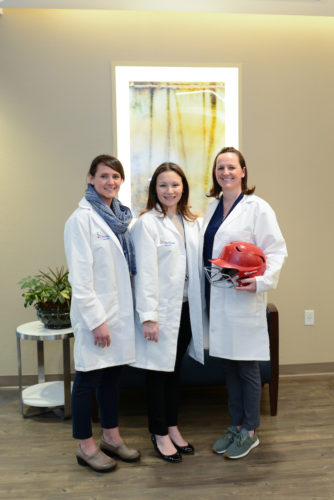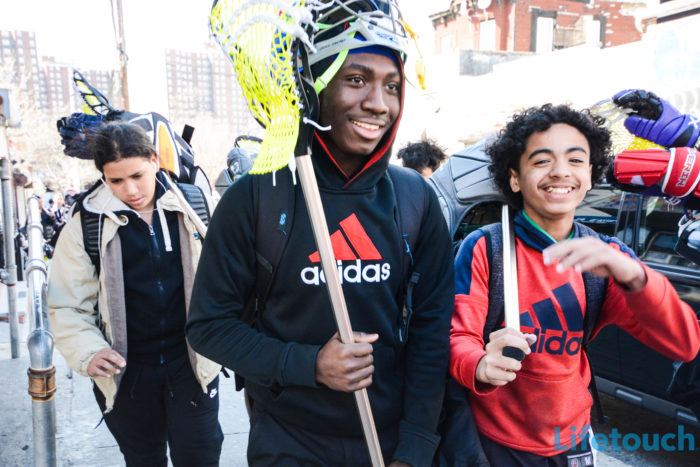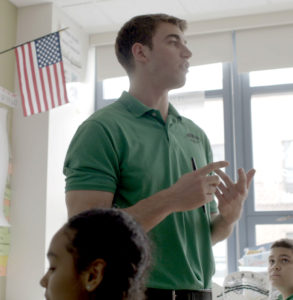New Fiddleheads Cooking Studio Ignites Culinary Curiosity For the Littlest Food Explorers

Fiddleheads Cooking Studio has been transforming children’s attitudes towards food through its unique approach to cooking education and kitchen science since 2016. With a mission of “growing the next generation of food explorers,” the studio is differentiated by a belief that children of all ages can be joyful participants in the kitchen. Having enjoyed success in Pound Ridge, Fiddleheads is moving to a new, expanded studio in Mount Kisco this March. The studio offers after-school programming, birthday parties, mini camps and private in-home instruction for both children and adults all in a rustic, remote farm-like setting.
With more than ten years of experience as a cooking instructor, owner Renana Shvil, explains her philosophy saying, “Talking with children about making healthier choices for meals and snacks should be a constant, engaging process. From getting acquainted to the bare ingredients to enjoying the finished product, each activity represents a learning opportunity.” Fiddleheads Cooking Studio is the result of that vision, born by melding Renana’s passion for food education with her background as a preschool instructor.
During lessons, Renana guides students through an exploration of healthy, delicious seasonal ingredients. Children discuss the items laid before them and are encouraged to touch, smell and taste everything. As they work together to create the dish, students learn how to use kitchen tools safely and they enjoy eating the final product as a community, sharing their thoughts about the meal’s flavor and texture.
To celebrate the launch of the new studio location, Fiddleheads will host a special series of $1 March classes leading up to the official launch of the Spring term in April. To learn more and view the full schedule, visit fiddleheadscookingstudio.com. Classes will be offered for children ages 18 months to 16 years. Family cooking classes and adult classes are also available.





 The statistics for the children of Hour Children are grim. Read reports that children whose mothers are in prison have a much lower college rate versus those whose fathers are in prison. She hopes to crack a dent in that rate, saying, “These girls have to go to college. I love to mentor because I know firsthand how strong an impact it can have on a child’s future. Growing up, I was a little sister in the Big Brothers, Big Sisters program. My mom wasn’t stable and my “big sister” was so important. We would do little activities like make dinner or go bowling. Just having someone show interest in my life was huge and formative. I will absolutely stay in touch with these girls beyond their time in the program. I will be there to make sure they keep their lives on track. I’m paying it forward.”
The statistics for the children of Hour Children are grim. Read reports that children whose mothers are in prison have a much lower college rate versus those whose fathers are in prison. She hopes to crack a dent in that rate, saying, “These girls have to go to college. I love to mentor because I know firsthand how strong an impact it can have on a child’s future. Growing up, I was a little sister in the Big Brothers, Big Sisters program. My mom wasn’t stable and my “big sister” was so important. We would do little activities like make dinner or go bowling. Just having someone show interest in my life was huge and formative. I will absolutely stay in touch with these girls beyond their time in the program. I will be there to make sure they keep their lives on track. I’m paying it forward.”

 Last spring and fall, a girls’ program was added at The Highbridge Green School and there’s also a Bronx Lacrosse program now at another local middle school.
Last spring and fall, a girls’ program was added at The Highbridge Green School and there’s also a Bronx Lacrosse program now at another local middle school. As summer comes to a close, local parents can be found buying notebooks, pencils and clothes and getting ready for the changes in routines and activities that a new school year brings. But what about safeguarding the health of children returning to school?
As summer comes to a close, local parents can be found buying notebooks, pencils and clothes and getting ready for the changes in routines and activities that a new school year brings. But what about safeguarding the health of children returning to school?